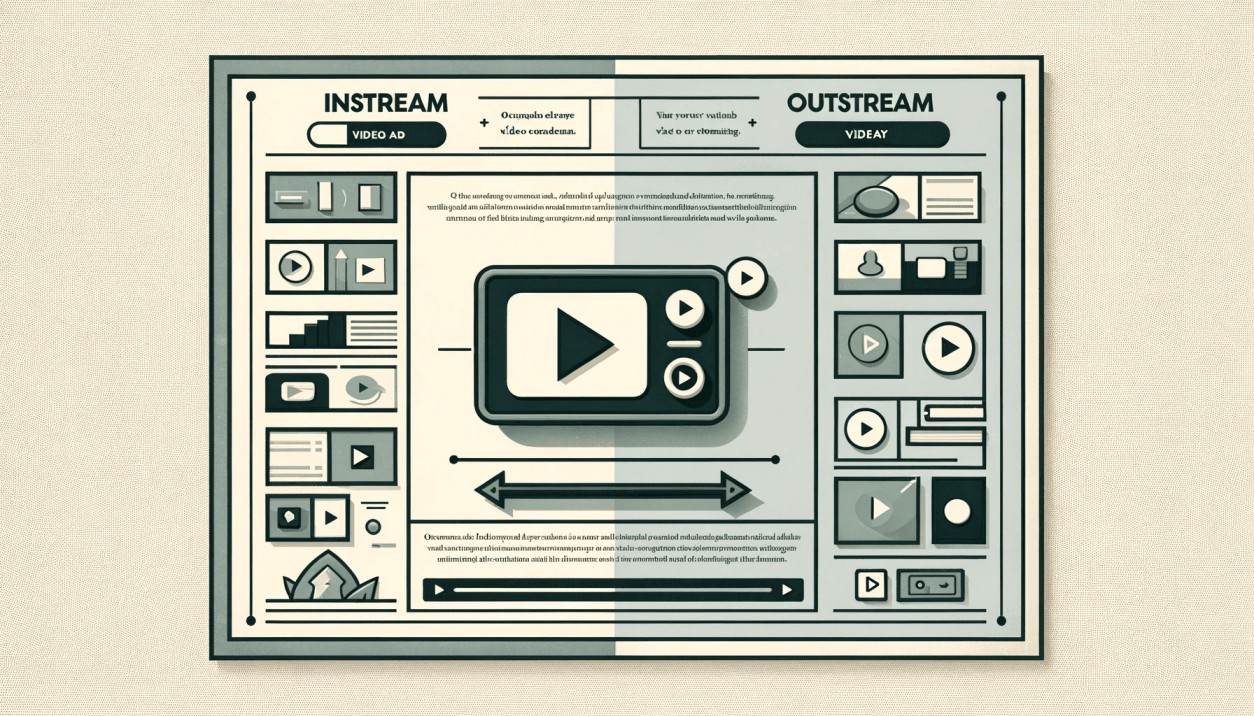Instream vs Outstream video ads

Video ads have become a cornerstone of digital advertising, captivating audiences with their dynamic and engaging content. In today’s digital landscape, they offer a powerful means of conveying brand messages and reaching target audiences effectively. Among the various formats of video ads, Instream and Outstream stand out as pivotal players. These two formats have redefined how advertisers connect with their viewers and how publishers monetize their platforms. To harness the full potential of video advertising, understanding the unique advantages of Instream and Outstream is paramount.
Instream and Outstream video ads are vital components of modern advertising strategies. Instream ads seamlessly integrate within video content, strategically placed before, during, or after videos, ensuring high viewer engagement and brand visibility. On the other hand, Outstream ads, known for their non-intrusive nature, provide a flexible and mobile-friendly approach, making them ideal for platforms without existing video content. The choice between these formats largely depends on the nature of your platform and monetization goals. Implementing both can maximize ad revenue, catering to a broader audience, and creating a balanced advertising ecosystem.
In this content we will go through the following topics to understand how these two types of advertising work:
- Instream Video Ads
- Outstream Video Ads
- Which one Suits Your Platform?
- Getting Started with Video Ads
Instream Video Ads
Instream ads are integrated within video content on platforms and are displayed before (pre-roll), during (mid-roll), or after (post-roll) the video content. They are known for their ability to captivate viewers when they are already engaged with a video, making them highly effective for brand visibility.
Advantages:
- High Engagement: Given their placement within video content, instream ads tend to have high engagement rates.
- Brand Visibility: They offer excellent brand visibility as they capture the viewer’s attention when they are already engaged.
- Better Recall: Viewers tend to have better recall of instream ads due to their positioning within engaging content.
Disadvantages:
- Intrusiveness: They can be perceived as intrusive since they interrupt the viewing experience.
- Dependent on Video Content: Publishers need to have existing video content to leverage instream ads.
Outstream Video Ads
Contrastingly, outstream video ads, also known as in-read or native video ads, appear within non-video editorial content, offering a less intrusive advertising experience. They play in a muted state, allowing the audience the choice to engage with the ad. This format is ideal for publishers without video content on their platforms and is particularly mobile-friendly given the exponential rise in mobile users and app downloads over the years.
Advantages:
- Less Intrusive: They offer a less intrusive advertising experience as they play muted and can be scrolled past.
- Flexibility: Outstream ads provide flexibility in design and placement, allowing for a tailored advertising experience.
- Mobile-Friendly: They are particularly beneficial for mobile platforms, extending the reach of video advertising beyond traditional video players.
Disadvantages:
- Lower Engagement: They might have lower engagement rates compared to instream ads as they are not tied to video content.
- Muted Playback: The muted playback can result in lower noticeability unless the viewer chooses to engage with the ad.
How much can you earn?
Use our calculator to see how much Holid can make you earn from your website:Revenue / month
$50,086
Revenue / year
$601,032
Estimated revenues are a guide and assume a reasonably competitive setup.
Which one Suits Your Platform?
The choice between instream and outstream largely depends on the nature of your platform and your monetization goals. Implementing a mix of both can potentially maximize ad revenue, catering to a broader audience, and creating a balanced advertising ecosystem on your platform. Although, these tips might come in handy when making a decision:
- Placement and User Experience:
- Instream ads are placed within a video player, making them suitable for platforms with rich video content, but they can interrupt the viewer’s experience.
- Outstream ads are embedded within editorial content or appear in web page corners, making them less intrusive and ideal for platforms without video content.
- Monetization Potential:
- Instream ads are traditionally lucrative for publishers due to their high engagement levels.
- Outstream ads provide a new monetization avenue for publishers, especially on mobile platforms.
- Flexibility and Customization:
- Outstream ads offer flexibility in design and placement, allowing for a tailored advertising experience. They come in various formats like In-Page, In-Banner, and In-Text, each with unique placement and engagement benefits.
- Quality Control and Brand Safety:
- Outstream ads give publishers more control over ad placements, aiding in avoiding problematic content and ensuring brand safety.
Looking for other ways to monetize your website?
Read more in this article
Getting Started with Video Ads
Holid offers both instream and outstream video ads, catering to a variety of publisher requirements. The services provided significantly lessen the administrative burden through automatization, allowing a focus on revenue enhancement and system improvement.
We are proactive in scouting new technologies to uncover additional revenue streams, ensuring the utilization of the latest advertising innovations.
The blend of technology and service, paired with our instream and outstream video ads, offers a balanced advertising ecosystem for publishers. Whether it’s maximizing engagement with instream ads or extending advertising reach with less intrusive outstream ads, Holid’s offerings are tailored to meet a diverse range of advertising needs.
Learn more about how Holid can help you with your website monetization.
